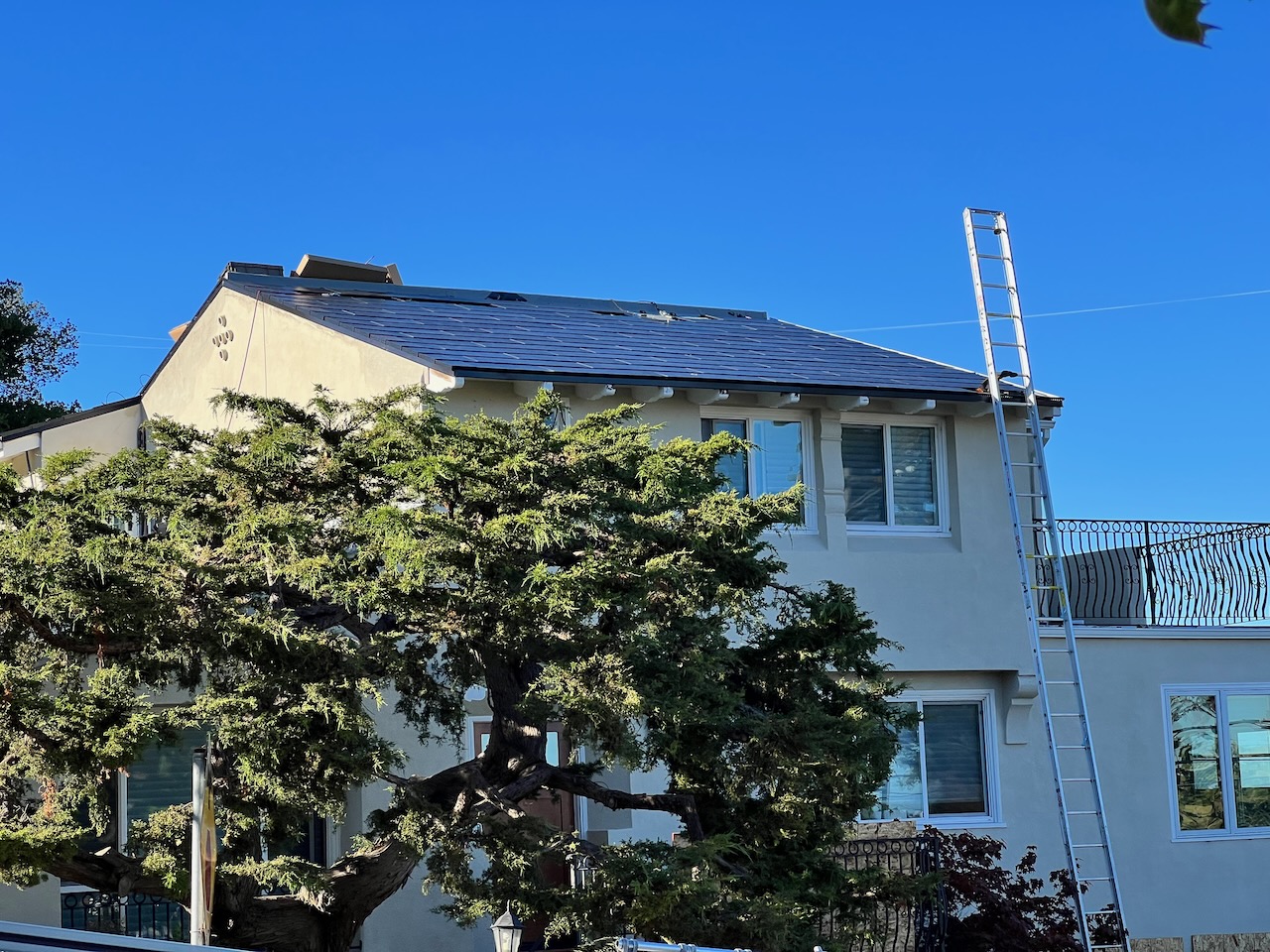When we decided to transition our household completely to EVs with the Tesla Model X, we knew that we wanted to close the renewable energy loop with solar power. As we took delivery of the car back in early 2022, I was already making inquiries to home solar panel installers, trying to nail down quotes for a system appropriate for 2 EVs along with a steadily increasing number of electric home appliances. And much like selecting a general contractor for home renovations, there’s a wide array of choices and a dearth of information in making an informed selection; anecdotes and referrals go a long way in generating any kind of reassurance that you’re making a good decision.
Frustratingly, it took months of back-and-forth with multiple companies’ “energy advisors” to go over preliminary designs and cost estimates, only to have all of them flake in some way. Our project had 3 complications:
- We wanted to repair or replace the clay roof tiles that sprung a roof leak during the previous winter’s storms;
- The shape of the roof is complex and each surface can fit a limited number of regularly-sized solar panels1;
- We needed a fairly big system to charge the cars.
The combination of system size and roof shape meant that any traditional system would result in a patchwork of panels. As we leaned more towards replacing the roof, even with the supply chain disruptions for solar equipment through COVID, the Tesla solar roof became a serious contender with our set of requirements. With our 2 cars, we’re quite familiar with the early-adopter Tesla experience—long wait times, flashy product with some technical cred, subpar customer service—but other solar providers seemed equally questionable, at least through the initial scoping conversations.
We put down a deposit in February and weren’t done until September—luckily, just before the rainy season in early wintertime. Along the way, there was a major solar tile supply delay, site inspections, architectural designs, and construction permits to obtain. Eventually, we got through to someone to schedule the local crew to tackle the project, and within 2 weeks they tore off the old roof, repaired any damage they found underneath, and put in the new tiles along with installing a Powerwall+ backup battery. It took another 3 weeks to verify the system, get the city to approve the installation, and obtain the power utility’s Permission to Operate to turn everything on2.
To Tesla’s credit, the workers who worked onsite to install the new roof were more professional than most home maintenance/improvement folks we’ve interacted with. They came on time and were ready to get started by 8:30 a.m. every morning, rolling in on several Tesla-branded box trucks. They took pictures documenting their work and issues they ran across, vacuumed, and swept the perimeter of the house every evening3, and there’s a separate handyman team that stays on after the initial installation to tackle any outstanding issues or repair anything that resulted from the roofing job. As with the initial installation, the hardest part about working with installers and repairmen has been getting time on their schedules; Tesla does not have enough people on the ground to perform installs and repairs, and the only recourse for help requires going through their mediocre customer support system. As is the case with their cars, the product is great—when everything works as expected.
We live on a busy street in our town, and the cluster of Tesla trucks prompted some passerby interest. Around here, it feels like every 4th car is a Tesla so that’s no longer an uncommon sight, but seeing the brand working on a roof is strange enough that people stopped to inquire about their work. It seemed like the installers were used to the attention, though, and it honestly makes for great free advertising on their part.
Despite the delays, the timing of our solar roof installation worked out okay in our favor. California just approved our 3rd version of net metering—NEMS 3.0—that reduces payback rates of electricity from residential solar systems to public utilities. This further elongates how long it takes for a system to break even on its costs, but any installed before April 2023 are grandfathered into the more consumer-favorable NEMS 2.0 for 20 years. The Inflation Reduction Act’s additional tax credit incentives around solar systems, including costs for battery storage, make this home upgrade slightly more cost-effective.
The system itself has been running fine. Like with their cars, Tesla’s system is designed to be online all the time, and somewhat annoyingly, controlled only through their singular mobile app—juxtaposed with the controls for their vehicles. That said, the app itself is well-designed and features informational animations on the flows of electricity between the panels, battery, and grid, along with energy generation and charging stats4. The always-connected system means that tech support can troubleshoot and debug the system remotely, which is theoretically helpful. In practice, my problems have necessitated onsite visits each time anyway.
It’s hard to give a ringing endorsement for the Tesla solar roof. It’s a niche product, whose (increased) costs only sorta make sense if the roof needs to be replaced at the same time, and it’s complicated enough to make regular solar panels5 difficult, and the flat black metal tiles aesthetic doesn’t clash too much with the home’s exterior design. It also takes a while to schedule and install, and you have to hope that post-install issues are minimal as customer support is at best uneven.
Yes, there is a cool factor with the roof and it’s fairly unique, even in 2023. But whereas cool is an important consideration for phones upgraded every year or 2, it’s less so for cars bought every 4+ years—and far less impactful for roofs that are to last 25 years or longer.
We found out later that our town has an ordinance where solar panels have to be at least 1 foot away from the edge of the roof, further reducing the available surface area.↩
There was a bit where without PTO, we closely husbanded the power that the solar system generated, routing it judiciously between the house, the Powerwall battery, and our cars.↩
Stuff tends to fall from the roof, and nails on the driveway make for unexpected flat tires.↩
It was fun the first couple of days to keep a close eye on exactly how much power is being used when, but like most utilities, eventually it fades into the background.↩
Which Tesla also sells, cheaper than the competition in most cases.↩




